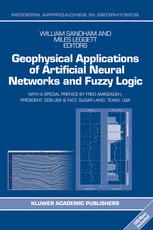

Most ebook files are in PDF format, so you can easily read them using various software such as Foxit Reader or directly on the Google Chrome browser.
Some ebook files are released by publishers in other formats such as .awz, .mobi, .epub, .fb2, etc. You may need to install specific software to read these formats on mobile/PC, such as Calibre.
Please read the tutorial at this link: https://ebookbell.com/faq
We offer FREE conversion to the popular formats you request; however, this may take some time. Therefore, right after payment, please email us, and we will try to provide the service as quickly as possible.
For some exceptional file formats or broken links (if any), please refrain from opening any disputes. Instead, email us first, and we will try to assist within a maximum of 6 hours.
EbookBell Team

4.0
66 reviewsThe past fifteen years has witnessed an explosive growth in the fundamental research and applications of artificial neural networks (ANNs) and fuzzy logic (FL). The main impetus behind this growth has been the ability of such methods to offer solutions not amenable to conventional techniques, particularly in application domains involving pattern recognition, prediction and control. Although the origins of ANNs and FL may be traced back to the 1940s and 1960s, respectively, the most rapid progress has only been achieved in the last fifteen years. This has been due to significant theoretical advances in our understanding of ANNs and FL, complemented by major technological developments in high-speed computing. In geophysics, ANNs and FL have enjoyed significant success and are now employed routinely in the following areas (amongst others): 1. Exploration Seismology. (a) Seismic data processing (trace editing; first break picking; deconvolution and multiple suppression; wavelet estimation; velocity analysis; noise identification/reduction; statics analysis; dataset matching/prediction, attenuation), (b) AVO analysis, (c) Chimneys, (d) Compression I dimensionality reduction, (e) Shear-wave analysis, (f) Interpretation (event tracking; lithology prediction and well-log analysis; prospect appraisal; hydrocarbon prediction; inversion; reservoir characterisation; quality assessment; tomography). 2. Earthquake Seismology and Subterranean Nuclear Explosions. 3. Mineral Exploration. 4. Electromagnetic I Potential Field Exploration. (a) Electromagnetic methods, (b) Potential field methods, (c) Ground penetrating radar, (d) Remote sensing, (e) inversion.